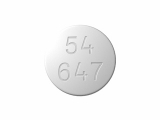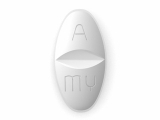Learn the basics of chemistry for pharmacy
Chemistry plays a crucial role in the field of pharmacy. To understand the mechanisms of drugs and their interactions within the human body, pharmacists must have a solid understanding of the fundamental principles of chemistry. This knowledge allows them to develop effective medications, ensure their safety, and provide optimal pharmaceutical care to patients.
One of the key concepts in chemistry for pharmacy is understanding the structure and function of various molecules. This includes familiarizing oneself with the different classes of organic compounds, such as alcohols, aldehydes, and esters, and their impact on drug activity. Furthermore, learning about the different types of bonds, such as covalent and ionic, allows pharmacists to predict chemical reactivity and understand how drugs can be modified to improve their pharmacological properties.
Another important aspect of chemistry in pharmacy is studying the principles of solubility and dissolution. Pharmacists need to know how different drugs dissolve in various solvents, as well as their solubility limits, in order to formulate appropriate dosage forms and ensure drugs are bioavailable. Additionally, understanding the pH of drug substances and their impact on stability and absorption is crucial in developing safe and effective medications.
In addition to these concepts, pharmacists must also have a thorough knowledge of analytical chemistry. This includes understanding techniques such as spectroscopy, chromatography, and titration, which are used to identify and quantify drugs and their metabolites. By utilizing these analytical techniques, pharmacists can ensure the quality and accuracy of medications, as well as detect any potential impurities or contaminants that may affect patient safety.
In conclusion, a solid understanding of the fundamentals of chemistry is essential for pharmacists in order to provide optimal pharmaceutical care. By grasping concepts such as molecular structure, solubility, and analytical techniques, pharmacists can develop safe and effective medications that directly impact patient health and well-being.
Atoms and Molecules
In chemistry, atoms and molecules are the basic units of matter. An atom is the smallest particle of an element that retains the chemical properties of that element. Atoms are composed of three types of subatomic particles: protons, neutrons, and electrons. Protons have a positive charge, neutrons have no charge, and electrons have a negative charge.
Atoms combine together to form molecules, which are the smallest units of a compound that still retain the chemical properties of that compound. Molecules can be made up of two or more atoms of the same element or different elements. The way atoms are bonded together in a molecule determines its chemical properties and behavior.
In a molecule, the atoms are held together by chemical bonds. There are three main types of chemical bonds: covalent bonds, ionic bonds, and metallic bonds. Covalent bonds occur when two atoms share electrons, resulting in a stable arrangement of atoms. Ionic bonds occur when one atom transfers electrons to another atom, creating charged ions that attract each other. Metallic bonds occur when metal atoms share a "sea" of electrons, which allows them to conduct electricity and heat.
Understanding atoms and molecules is crucial in pharmacy because many drugs and medications are designed to interact with specific molecules in the body. By understanding the chemical properties and behavior of atoms and molecules, pharmacists can develop more effective and safe medications for patients.
Bonding and Chemical Reactions
Bonding is a fundamental concept in chemistry that involves the formation of chemical compounds through the sharing, transfer, or redistribution of electrons. Chemical reactions, on the other hand, describe the process through which these bonds are broken, rearranged, or formed to create new compounds. Understanding bonding and chemical reactions is crucial for pharmacy, as it allows pharmacists to predict the behavior and properties of different drugs and substances.
Types of Chemical Bonds
There are several types of chemical bonds that can be formed between atoms. Covalent bonds occur when two atoms share electrons to achieve a stable electron configuration. In ionic bonds, electrons are transferred from one atom to another, creating charged ions that are attracted to each other. Metallic bonds are formed between metal atoms and involve the sharing of a sea of delocalized electrons.
Chemical Reactions and Equations
Chemical reactions can be classified into different types, including synthesis, decomposition, combustion, and substitution reactions, among others. These reactions are represented by chemical equations, which show the reactants on the left side and the products on the right side. The coefficients in the equation represent the ratios of the reactants and products, indicating the stoichiometry of the reaction.
Chemical reactions can be influenced by factors such as temperature, pressure, concentration, and the presence of catalysts. Reactions can proceed in different ways, including reversible reactions where the products can revert back to the reactants under certain conditions.
Applications in Pharmacy
Understanding bonding and chemical reactions is essential for pharmacy as it allows pharmacists to predict the stability, bioavailability, and interactions of drugs within the body. Knowledge of different types of bonds helps in understanding how drugs are absorbed, metabolized, and eliminated. Chemical reactions also play a crucial role in drug formulation, as they determine the stability and efficacy of pharmaceutical products.
Moreover, understanding bonding and chemical reactions can help pharmacists identify potential drug-drug interactions or adverse reactions. This knowledge is essential for ensuring the safety and effectiveness of drug therapies, especially when multiple drugs are involved in a patient's treatment.
- Covalent, ionic, and metallic bonds are different types of chemical bonds.
- Chemical reactions can be represented by chemical equations.
- Understanding bonding and chemical reactions is important for predicting drug behavior and interactions.
- Chemical reactions are influenced by factors such as temperature, pressure, and concentration.
- Bonding and chemical reactions are essential for drug formulation and ensuring the safety of drug therapies.
States of Matter
In the field of chemistry, the term "states of matter" refers to the different forms in which matter can exist. There are three primary states of matter: solid, liquid, and gas.
Solid: A solid is a state of matter characterized by a fixed shape and volume. The particles in a solid are tightly packed together and vibrate in place. Solids have a definite shape and do not easily compress.
Liquid: A liquid is a state of matter that has a definite volume but no fixed shape. The particles in a liquid are in constant motion and can flow past one another. Liquids can take the shape of their container but do not expand or compress easily.
Gas: A gas is a state of matter that has neither a fixed shape nor a fixed volume. The particles in a gas are free to move and are far apart from each other. Gases can expand to fill any container and can be easily compressed.
These three states of matter can undergo changes through the processes of melting, freezing, evaporation, condensation, and sublimation. Understanding the behavior of matter in different states is crucial in the field of pharmacy, as it helps pharmacists understand how drugs interact with the body and how they can be formulated and administered.
Acids and Bases
Acids and bases are fundamental concepts in chemistry that play an important role in pharmacy. Acids are substances that release hydrogen ions (H+) when dissolved in water, while bases are substances that release hydroxide ions (OH-) when dissolved in water.
One commonly used scale to measure the acidity or basicity of a substance is the pH scale. The pH scale ranges from 0 to 14, where a pH value of 7 is considered neutral. Values below 7 indicate acidity, with lower numbers indicating stronger acidity. On the other hand, values above 7 indicate basicity, with higher numbers indicating stronger basicity.
Acids and bases can interact with each other in chemical reactions to form salts and water. This reaction, known as neutralization, occurs when equal amounts of acid and base are mixed together. The resulting solution is neutral, with a pH value of 7.
In pharmacy, understanding the properties of acids and bases is crucial for various applications. For example, the pH of a solution can affect the solubility and stability of drugs. Many drugs are formulated as salts to improve their solubility in water, and the choice of acid or base used for salt formation can impact the drug's properties and effectiveness.
Furthermore, acids and bases are also used in drug synthesis and analysis. Acid-catalyzed reactions are often employed in drug synthesis to speed up the reaction rate. Bases, on the other hand, can be used for organic compound extraction or chromatography techniques.
Overall, understanding the concepts of acids and bases is essential for pharmacists to ensure the quality, effectiveness, and stability of drugs. It allows for proper formulation and analysis, as well as the ability to control and optimize drug properties.
Chemical Equilibrium
Chemical equilibrium is a state in which the concentrations of reactants and products remain constant over time. It occurs when the rates of the forward and reverse reactions are equal. At equilibrium, the reaction continues to occur, but the concentrations of reactants and products do not change.
Factors affecting chemical equilibrium:
- Concentration: Changing the concentration of reactants or products can shift the equilibrium towards the side with the lower concentration, according to Le Chatelier's principle.
- Temperature: Increasing the temperature generally shifts the equilibrium in the direction of the endothermic reaction, while decreasing the temperature shifts it towards the exothermic reaction.
- Pressure: For reactions involving gases, increasing the pressure can favor the side with fewer gas molecules, while decreasing the pressure can favor the side with more gas molecules.
The equilibrium constant:
The equilibrium constant, represented as K, is a value that quantifies the relationship between the concentrations of reactants and products at equilibrium. It is calculated using the concentrations of reactants and products raised to their corresponding stoichiometric coefficients in the balanced chemical equation.
Applications of chemical equilibrium in pharmacy:
Understanding chemical equilibrium is important in pharmacy as it helps in predicting the behavior of drug molecules in biological systems. By studying the equilibrium between a drug and its target receptor, researchers can determine the optimal conditions for drug action and develop more effective medications.
Examples of chemical equilibrium in pharmacy:
- Drug absorption: The equilibrium between a drug molecule in the bloodstream and its receptors on cell surfaces determines the rate and extent of drug absorption into the body.
- Drug metabolism: The equilibrium between a drug molecule and its metabolites in the liver and other organs affects the rate at which the drug is eliminated from the body.
- Drug-drug interactions: When multiple drugs are present, their equilibrium interactions can influence the overall therapeutic effect and potential side effects.
Follow us on Twitter @Pharmaceuticals #Pharmacy
Subscribe on YouTube @PharmaceuticalsYouTube





Be the first to comment on "Learn the basics of chemistry for pharmacy"